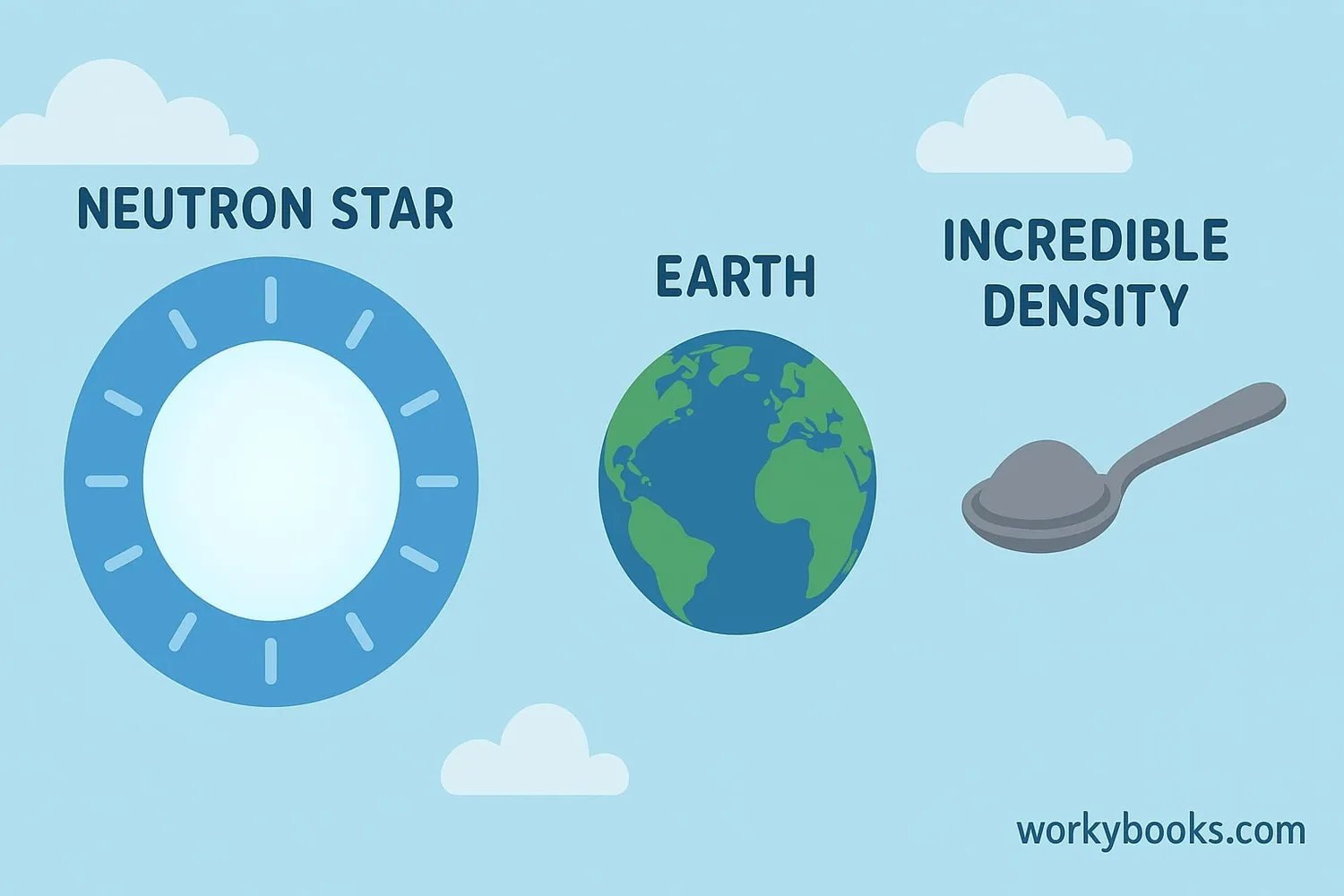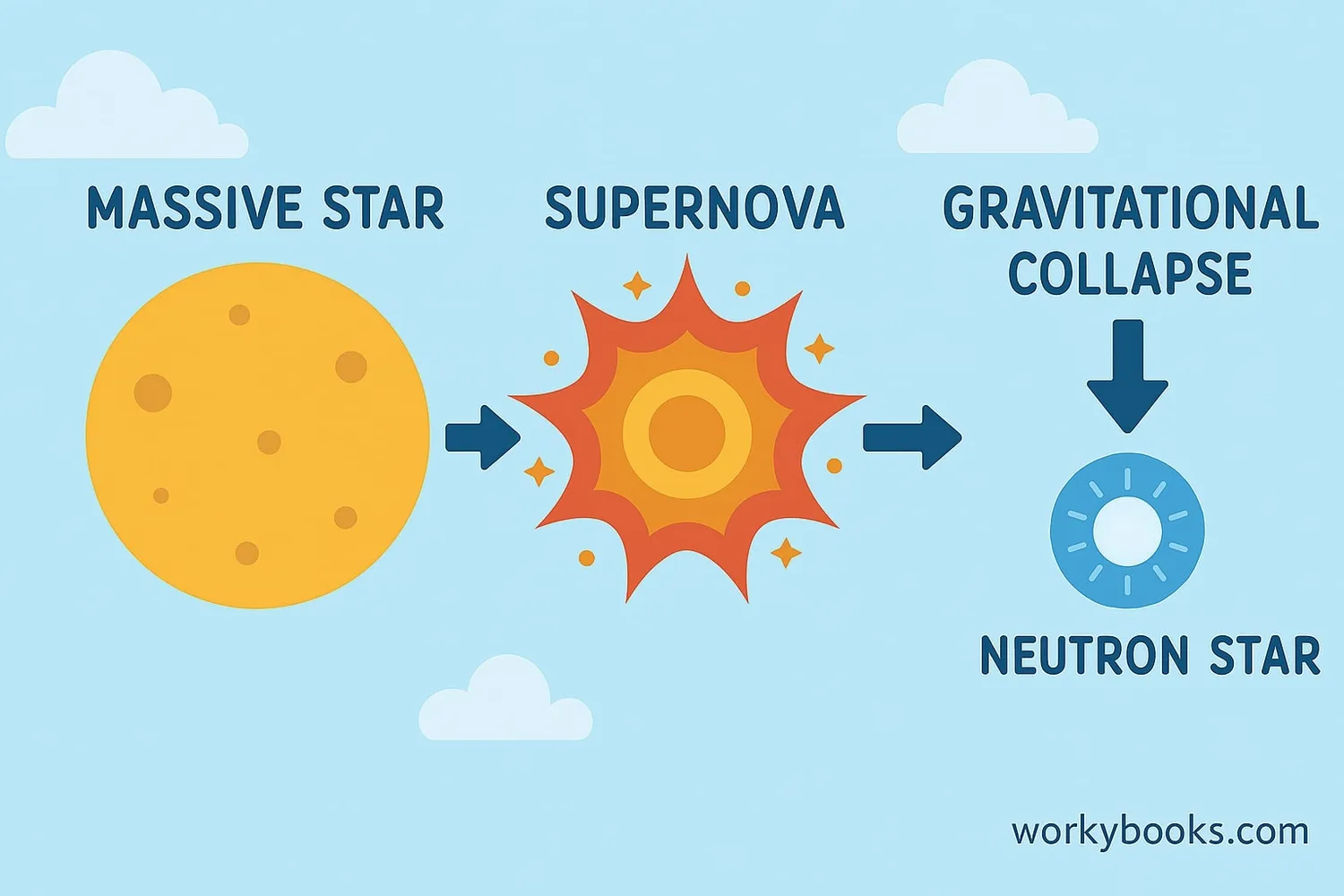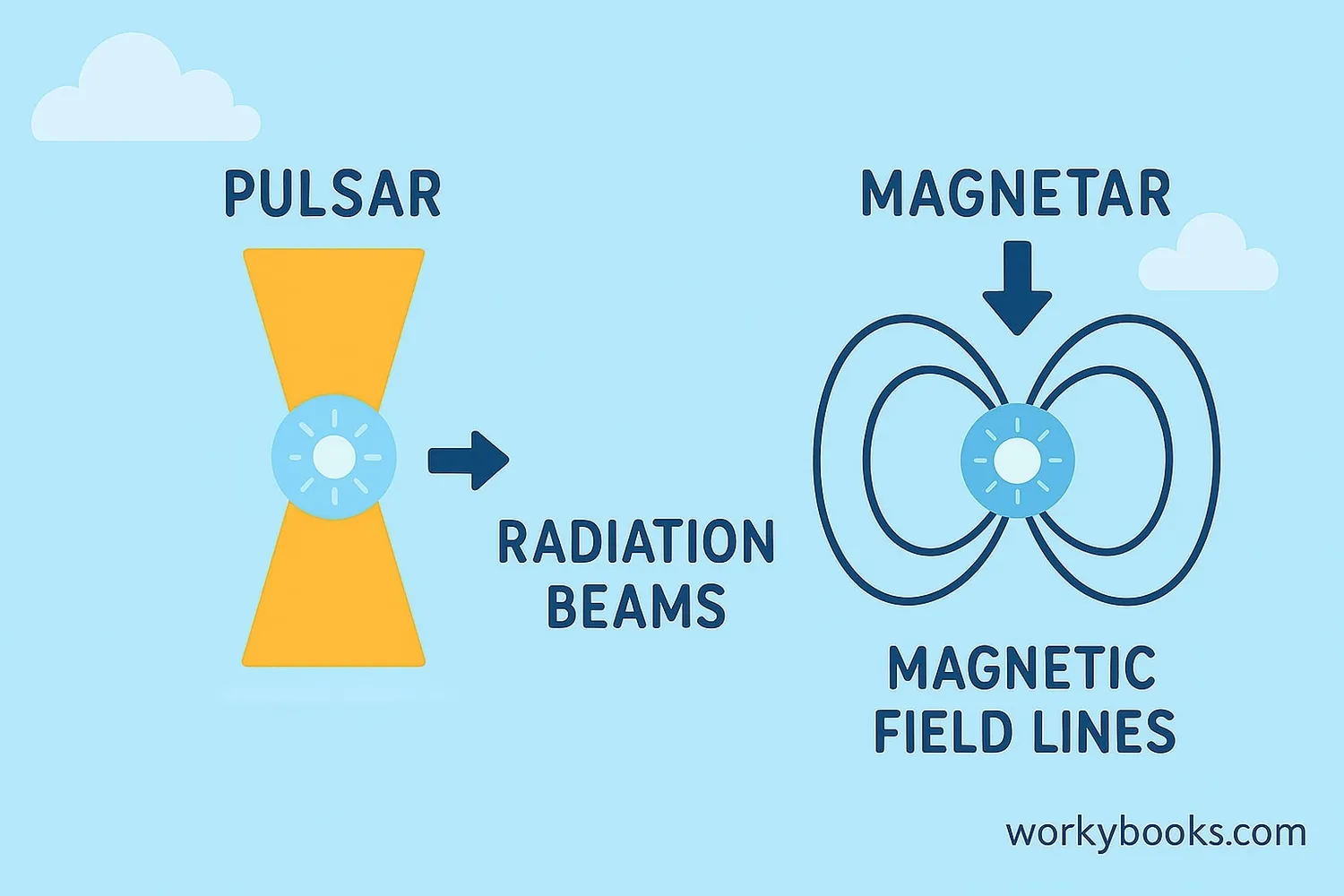Neutron Stars - Definition, Examples, Quiz, FAQ, Trivia
Discover the incredible cosmic remnants of exploded stars
What is a Neutron Star?

A neutron star is one of the most extreme objects in the universe! It's the super-dense core left behind after a massive star explodes in a supernova.
Imagine crushing the entire mass of our Sun into a ball the size of a city! A neutron star is so dense that just one teaspoon of its material would weigh as much as a mountain on Earth. These compact stars are made almost entirely of neutrons, which are particles found in atoms.
Space Fact!
Neutron stars spin incredibly fast! Some rotate hundreds of times per second, creating beams of radiation we can detect from Earth.
How Neutron Stars Form

Neutron stars are born from the spectacular death of massive stars in events called supernovas. Here's how this amazing cosmic process works:
Massive Star
A star at least 8 times more massive than our Sun
Nuclear Fuel Depleted
The star runs out of fuel for nuclear fusion
Supernova Explosion
The star collapses then explodes violently
Core Collapse
The remaining core collapses under gravity
Neutron Star
Protons and electrons combine to form neutrons
This process of gravitational collapse creates degenerate matter where atoms are crushed together so tightly that only neutrons can exist. The result is a stellar remnant about 20 km wide but with more mass than our Sun!
Supernova Power!
A supernova explosion can briefly outshine an entire galaxy of billions of stars!
Types of Neutron Stars

Not all neutron stars are the same! Scientists have discovered special types with amazing features:
Pulsars
Rapidly spinning neutron stars that emit beams of radiation like cosmic lighthouses
Magnetars
Neutron stars with the strongest magnetic fields in the universe
X-ray Sources
Some neutron stars pull material from companion stars, creating X-ray emissions
These cosmic phenomena help scientists study extreme physics that we can't recreate on Earth. Pulsars act as precise cosmic clocks, while magnetars have magnetic fields so strong they could erase credit cards from thousands of miles away!
Neutron stars help us understand:
• How matter behaves under extreme pressure
• The nature of gravity in strong fields
• The life cycles of stars
• The origin of heavy elements in the universe
Neutron Star Quiz
Test your knowledge with this space quiz! Answer all 5 questions to see how much you've learned.
Frequently Asked Questions
Here are answers to common questions about neutron stars:
Neutron Star Trivia
Discover amazing facts about these cosmic powerhouses:
Extreme Density
A sugar-cube-sized piece of neutron star material would weigh about 1 billion tons on Earth - that's as much as Mount Everest!
Cosmic Speedsters
Some neutron stars move through space at over 1,000 km per second! These "runaway" stars were kicked by their supernova explosions.
Magnetic Monsters
Magnetars have magnetic fields 1,000 times stronger than regular neutron stars. A magnetar halfway to the Moon could erase credit cards on Earth!
Historic Discovery
The first neutron star (a pulsar) was discovered in 1967 by Jocelyn Bell Burnell. The regular radio pulses were so precise scientists first called it LGM-1 (Little Green Men 1)!


